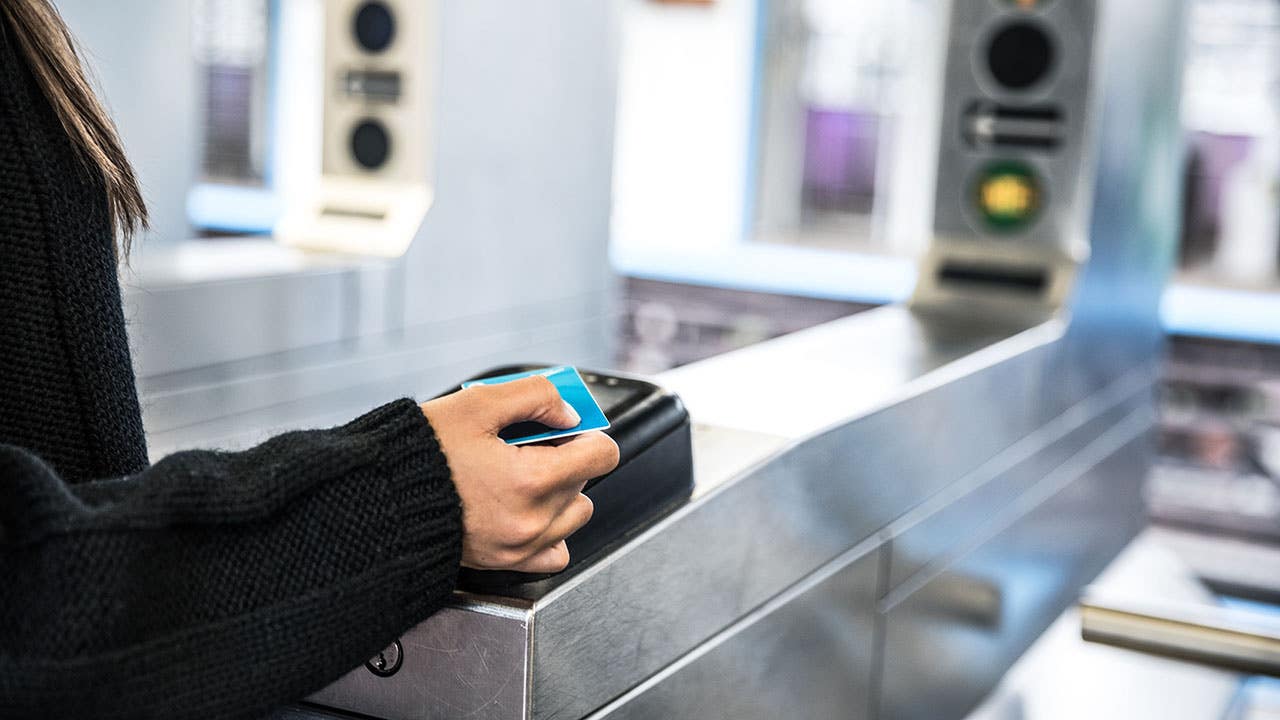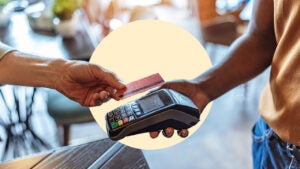Contactless payments surge and approach 1 in 5 in-person card payments




Nearly 20 percent of all in-person credit or debit card transactions in the U.S. are now contactless, Visa reported during its Jan. 27, 2022, earnings call. Among the two contactless payment types, the company says that tapping a card at the point of sale is much more common than using a mobile payments service such as Apple Pay or Google Pay.
That surprises me since Americans are obsessed with their phones. A Visa spokesperson speculated that it’s easier for consumers to tap a card, which doesn’t weigh very much, than to dig a heavier phone out of their pocket or purse and then follow the multi-step process to unlock the app and verify their identity.
New York City leads the way
In the Big Apple, 45 percent of in-person card transactions are contactless. The city’s subway and bus system began accepting contactless payments on a limited basis in mid-2019 and in full by the end of 2020. This isn’t the only way to pay for train and bus rides in New York, but it has been much more popular than officials anticipated.
In July 2021, New York’s Metropolitan Transportation Authority announced its customers had made 100 million tap-and-go payments. Monthly usage grew rapidly from about 6 million taps in January 2021 to nearly 17 million in June 2021.
The COVID-19 pandemic has encouraged many people to use contactless payment methods because they’ve been worried about touching potentially germy payment terminals. Public transportation is an ideal use case for contactless payments since it’s a quick and easy way to pay a train or bus fare. But, ironically, ridership has been devastated by the pandemic as many people shifted to remote work and spent less time in crowds.
Still, the New York data suggests a significant halo effect. Public transportation remains a lifeblood of the city’s culture despite the pandemic. Someone’s first contactless payment experience might have been a subway or bus fare, and then they carried this new habit elsewhere. Tapping a card or phone is also popular at takeout restaurants, grocery stores, pharmacies and other locations where people like to get in and out quickly.
In San Francisco, Oakland and San Jose, more than 30 percent of in-person card transactions are contactless, Visa says. The ratio is above 25 percent in Los Angeles, Seattle, Detroit, Miami and Salt Lake City.
America is catching up to the rest of the world
While they’re a recent phenomenon in the U.S., contactless payments have been popular in other countries for several years. In 2017, for example, 92 percent of in-store Visa transactions made in Australia were contactless. Singapore (63 percent) and Canada (47 percent) were also early adopters.
Jumping ahead to the fourth quarter of 2021, Mastercard said half of its global in-person transactions were made with a tap. Visa also referenced strong growth, especially in the U.S., India and Brazil. In fact, U.S. contactless usage more than doubled in the previous 12 months, the payment network revealed. Of course, it’s still well below the worldwide average.
America never seems to be on the leading edge when it comes to the adoption of new payment methods. We also lagged the rest of the world on the transition from magnetic stripes to the more secure chip-enabled (EMV) credit and debit cards.
In October 2016, the major card networks implemented a significant change. They shifted the liability for fraudulent transactions from banks to merchants (assuming the customer paid with an EMV-capable card but the merchant couldn’t process it). Merchants grumbled about the cost and complexity of upgrading their systems, and many missed the deadline. Still, over the past several years, chip card acceptance has become close to universal across the 50 states. Even gas stations, the last notable holdouts, which won an extension of the liability shift until late 2021, have made major strides.
This is relevant to the contactless discussion because most EMV-capable payment terminals can also process contactless transactions. The American financial industry chose to focus on chip cards first to avoid confusing consumers with these newfangled chips and taps simultaneously. Over the past few years, many of us have gradually become comfortable with both.
From 2018 to 2020, U.S. card issuers mailed hundreds of millions of contactless-enabled cards to their customers. Technology titans such as Apple and Google have also aggressively pushed their mobile payments services. While speed appears to be the primary appeal of contactless payments, mobile payments can also be more secure because they often involve a biometric screening process facilitated by the user’s smartphone. In other words, you can prove it’s you by scanning your face or fingerprint.
The bottom line
It took a while, but contactless payments have become common in America, and further exponential growth is likely as more consumers become comfortable with the technology.
Have a question about credit cards? E-mail me at ted.rossman@bankrate.com and I’d be happy to help.




